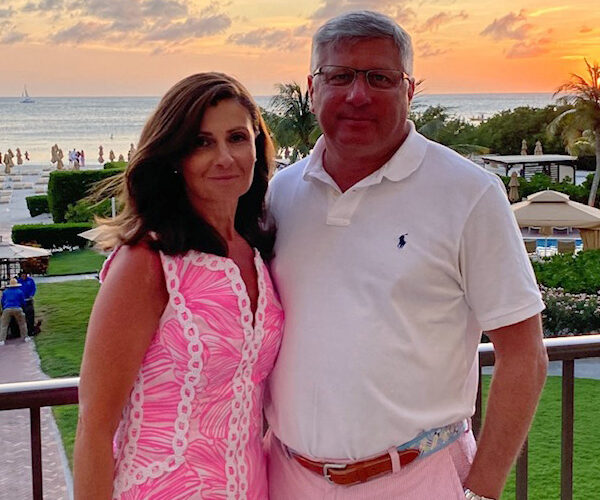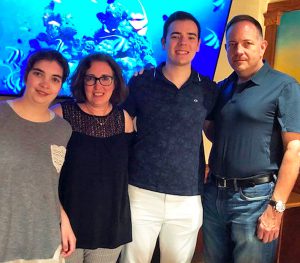By Elizabeth Piper, Health Educator, Jewish Community Services, an agency of The Associated
Two Women, One Wrong Turn:
The Ease of Opioid Addiction
for Women
I remember my first time using a prescription opioid. I was 17 and just had my wisdom teeth extracted earlier in the day. I was lying on the couch in our family room watching a re-run of Gilmore Girls, trying to distract myself from the pain I felt from the surgery.
My mom walked in with a white paper bag from the pharmacy. Inside was my prescription for Oxycodone. She opened the bottle and handed me one tablet. I took it with a glass of water and within 15 minutes, I felt something I had never experienced before.
Not only was the pain gone, but all the thoughts that usually filled my worried brain had dissipated. I felt like I was floating on cloud 9 and nothing bad could touch me; I was safe. I was in a state of utter and complete bliss. I turned to my Mom, smiled, and said while giggling happily to myself, “This is why people do drugs,” before closing my eyes and passing out.

After four days of using the tablets of oxycodone as prescribed, I asked my Mom to flush them down the toilet. While enjoying the high and temporary release from pain they offered me, I was scared of the power these tiny tablets possessed.
I grew up in a home afflicted with addiction and mental illness. My mother was diagnosed with bi-polar disorder after years of battling alcoholism. I saw the ugliness behind the appeal of a psychoactive substance; I watched my loving, charismatic, military-serving, Johns Hopkins graduate mother turn into a hateful, cruel, incoherent mess, and I had no interest in living that Jekyll and Hyde narrative myself.
My friend, “Anna,” however, had a very different experience. She was prescribed Percocet following gall bladder surgery in high school. The daughter of an opioid addict, Anna had always felt this deep and heavy void inside of her that resulted from the emotional and psychological abuse she fell victim to growing up. When she was prescribed the Percocet by her doctor, she received no warning about the highly addictive substance. She wasn’t asked if opioid addiction ran in her family. She wasn’t provided with any shocking statistic. She was simply advised to take the painkiller “as needed.”
When Anna reflects on the first time she swallowed an opioid painkiller, like me, she remembers feeling blissful and completely at peace with herself –a novel feeling for her. After a month, Anna felt physically and psychologically addicted to her painkillers.
While this rapid dependence may seem surprising, research by The U.S. Department of Health and Human Services (HHS) Office on Women’s Health (OWH) shows that women may become physically dependent on opioid pain medication more quickly than men, due to basic physical and psychological differences like body fat percentages, metabolic rate, and hormonal fluctuations.
Once Anna had finished the Percocet tablets that were prescribed by her physician, she began to feel withdrawal symptoms commonly referred to as “dope sickness” – something people with opioid use disorder (OUD) describe as the worst flu you could possibly imagine.
Symptoms include nausea, diarrhea, constipation, insomnia, hot and cold flashes, muscle aches and spasms, sensation of bugs crawling on or under your skin, headaches, and sweating. One study done by HHSOWH found that cravings were specifically higher among women than among men which puts people like Anna at higher risk for addiction and death by overdose.
While initially people with opioid use disorder chase the calming sensation opioids offer, eventually it becomes less about the “high” and more about avoiding the “low” that is dope sickness. The physical and psychological dependence on opioids is so intense that to live without them becomes not only unfathomable, but also seemingly impossible.
It’s no wonder then why so many women like Anna have struggled or are struggling with opioid use disorder in our country. While statistically there are more men overdosing and dying from prescription opioids, the rate of deaths from prescription opioid overdoses for women increased 471 percent between 1999-2015 compared to 218 percent for men. In addition, heroin deaths among women increased at more than twice the rate of men.
Subscribe to our newsletter
The Associated is a home for everyone in the Baltimore Jewish community. We offer several email lists to help people find a community, engage with their peers and support Jewish journeys around the world.
Join Our Mailing ListAdd Impact to Your Inbox
Sign up for our newsletter
Subscribe to our newsletter
The Associated is a home for everyone in the Baltimore Jewish community. We offer several email lists to help people find a community, engage with their peers and support Jewish journeys around the world.
Join Our Mailing List









 Please Wait while we loading your video.
Please Wait while we loading your video.